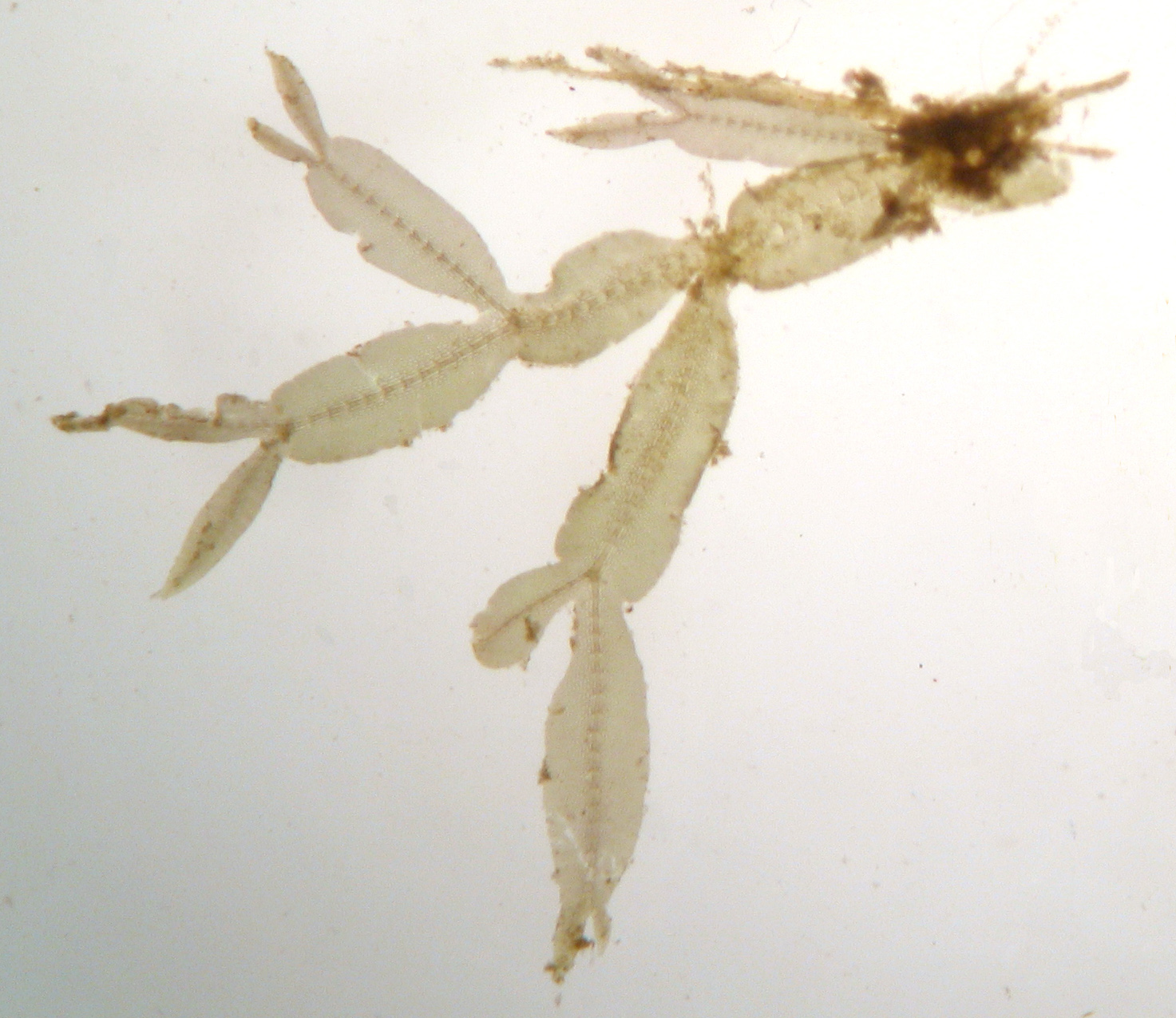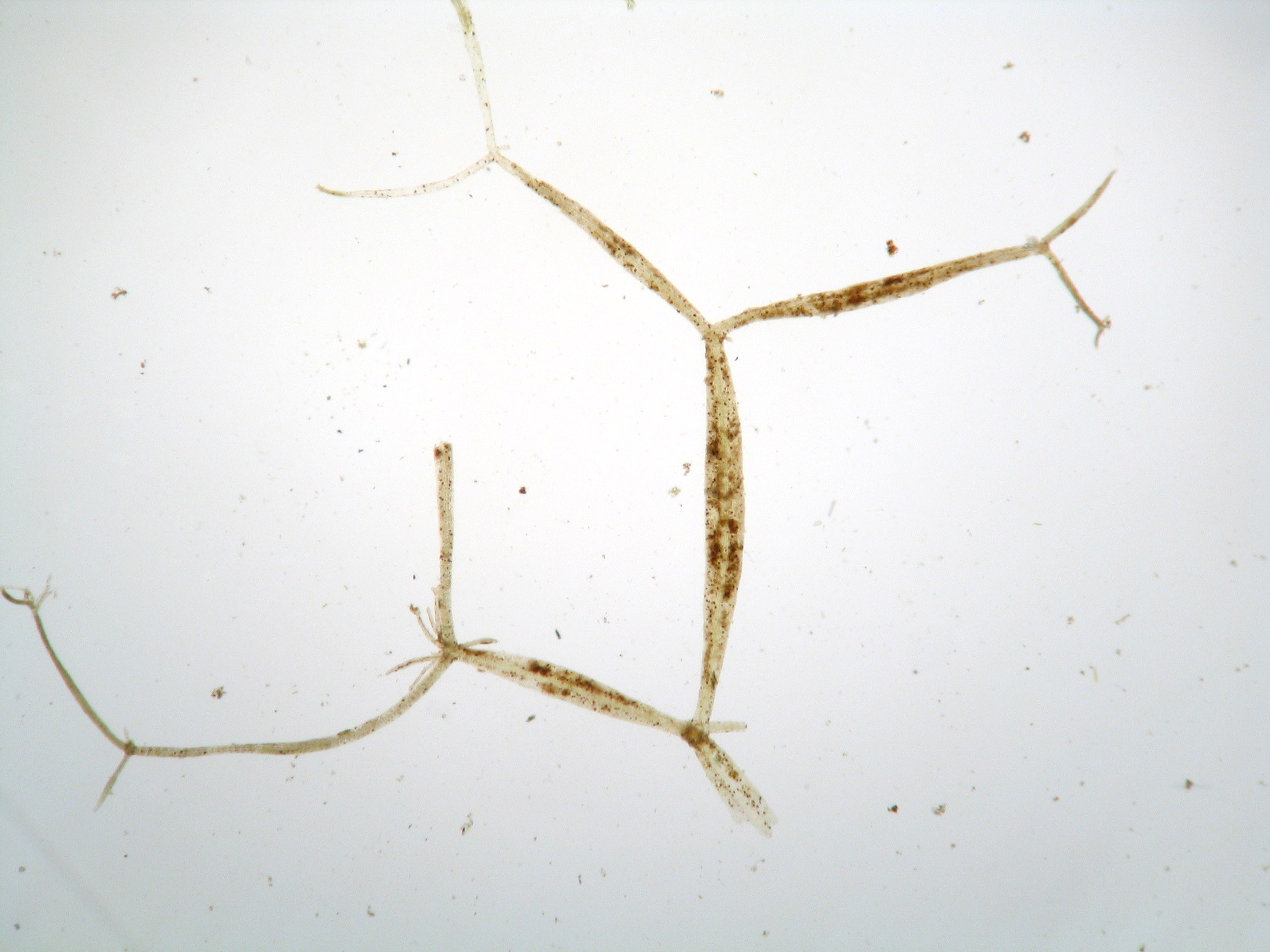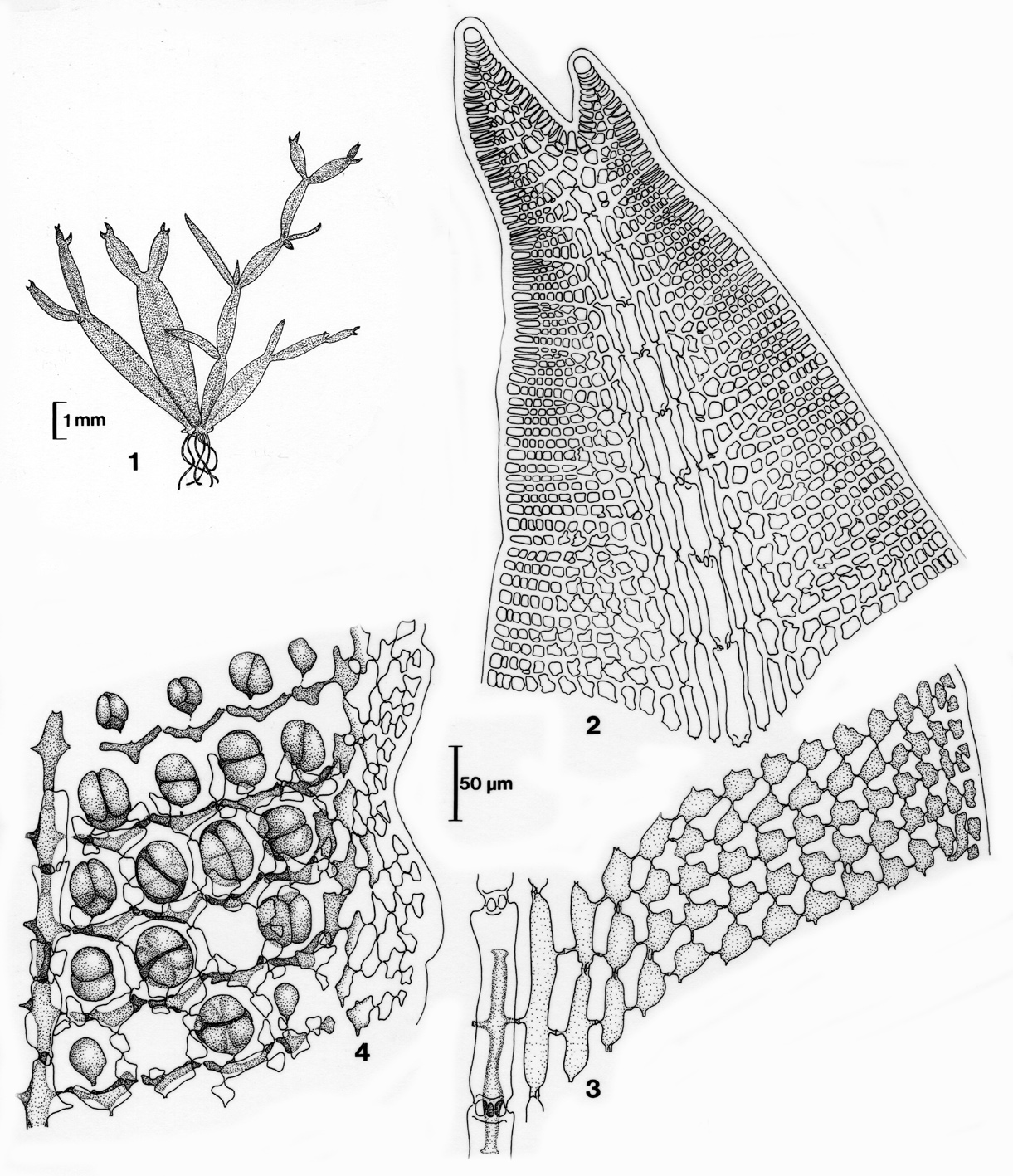Seaweeds of the South African South Coast


Order Ceramiales
Family Delesseriaceae
Caloglossa leprieurii (Montagne) G. Martens 1869: 234, 237
Plants forming violet to blackish tufts of ribbon-like fronds a few cm long. Fronds narrowly lanceolate, regularly constricted, branches and tufts of attaching rhizoids arising at constrictions; individual frond-sections between constrictions up to 3.5 mm long and 1100 µm wide. Small branches may occasionally arise from surfaces of the midrib. Growth from a prominent dome-shaped apical cell; transverse division produces a primary cell row, each cell of which produces two transverse and two lateral pericentral cells; lateral pericentrals give rise to secondary cell rows up to 20 cells long; tertiary cell rows develop on the abaxial side of proximal cells of the secondary cell rows and reach to thallus margin. Blades monostromatic except at midrib where they are normally 3 cells thick. Rows of tetrasporangia develop on the adaxial side of secondary cell rows, tetrasporangial areas extend from adjacent to midrib to submargins (at maturity at least 4 rows of cells remaining sterile); tetrasporangia roundish, to 50 µm in diameter, tetrahedrally divided. Spermatangia formed in sori on wings of thallus. Cystocarps globose, formed on midrib, up to 600 µm in diameter, at maturity with a short neck; carpospores ripening simultaneously, at maturity about 40 µm in diameter.
Collections, ecology and regional distribution
Recorded from as far west as the Berg River estuary on the SA west coast, and from a number of estuaries along the south and Kwazulu-Natal coasts (11-58). Restricted to estuarine environments, salt marshes and mangroves, often growing together with Bostrychia species
World distribution: worldwide in temperate to tropical localities (Guiry & Guiry 2013).
Type locality: French Guiana (Lipkin & Silva 2002).
Note 1: The development and reproduction of C. leprieurii is described in detail by Papenfuss (1961).
Note 2: Caloglossa ogasawaraensis Okamura was reported from Hluleka, Transkei (Bolton and Stegenga (1987), and we have found one plant that resembles this species at Goukou Estuary, Stilbaai (see second figure). This species is smaller and narrower than C. leprieurii and has frond lobes about 300 um wide and up to about 3 mm long. However, the dimensions of some of our C. lepriuerii specimens overlap with the above, and in the absence of comprehensive collections we are uncertain as to whether C. ogasawaraensis occurs here.

Caloglossa leprieurii ( length ca 8 mm).

A narrow Caloglossa that closely resembles C. ogasawarensis (Goukou estuary, Stilbaai).

Caloglossa leprieurii. 1. Habit. 2. Thallus apex. 3. Wing of single segment in mature thallus (note secondary pit connection). 4. Tetrasporangia. Reproduced from Stegenga et al. (1997).
References Caloglossa
Bolton JJ and H Stegenga 1987. The marine algae of Hluleka (Transkei) and the warm temperate / sub-tropical transition on the east coast of southern Africa. Helgolander Meeresuntersuchungen 41: 165-183.
Guiry, M.D. & Guiry, G.M. 2013. AlgaeBase. World-wide electronic publication, National University of Ireland, Galway. http://www.algaebase.org; searched on 20 May 2013.
Lipkin, Y. & Silva, P.C. 2002. Marine algae and seagrasses of the Dahlak Archipelago, southern Red Sea. Nova Hedwigia 75: 1-90, 7 figs.
Martens G. von 1869. Beiträge zur Algen-Flora Indiens. Flora 52: 233-238.
Papenfuss GF 1961. The structure and reproduction of Caloglossa leprieurii. Phycologia 1: 8-31.
Silva, P.C., Basson, P.W. & Moe, R.L. 1996. Catalogue of the benthic marine algae of the Indian Ocean. University of California Publications in Botany 79: 1-1259.
Stegenga, H., Bolton, J.J. & R. J. Anderson. 1997. Seaweeds of the South African west coast. Contributions from the Bolus Herbarium 18: 655 pp.
Cite this record as:
Anderson RJ, Stegenga H, Bolton JJ. 2016. Seaweeds of the South African South Coast.
World Wide Web electronic publication, University of Cape Town, http://southafrseaweeds.uct.ac.za; Accessed on 07 January 2026.